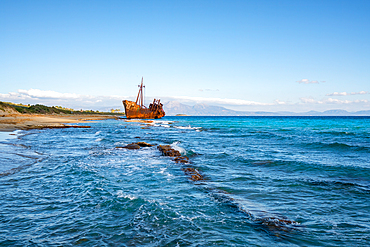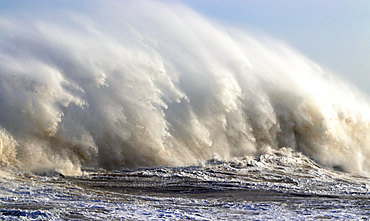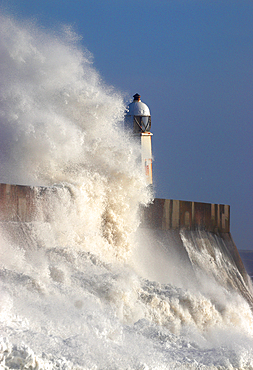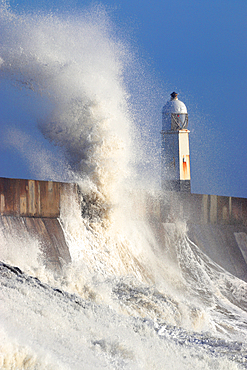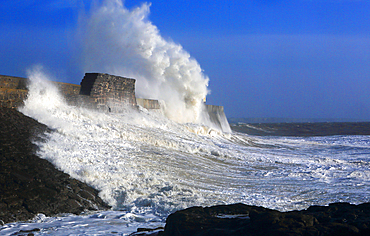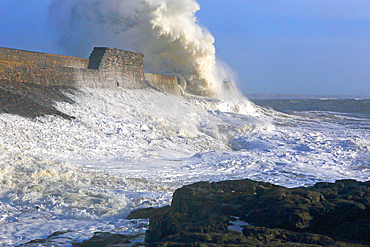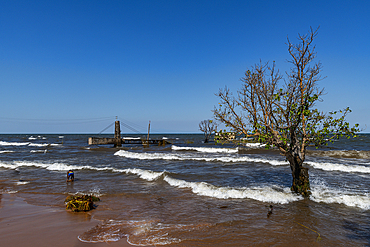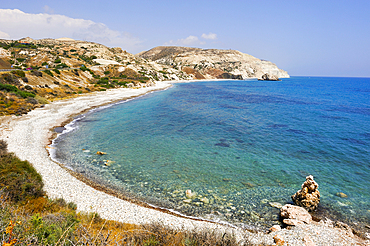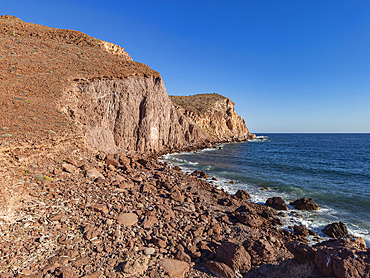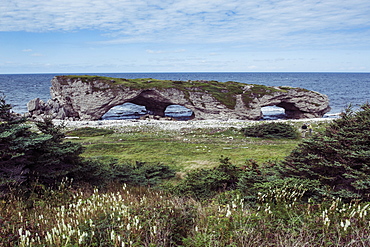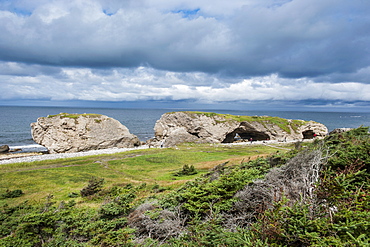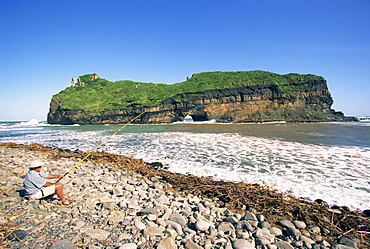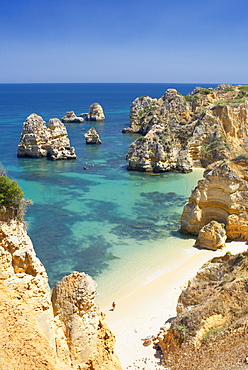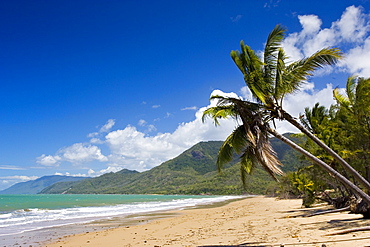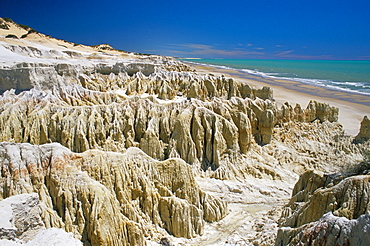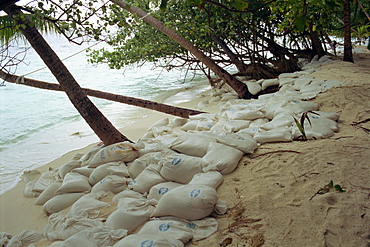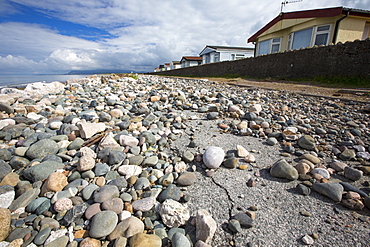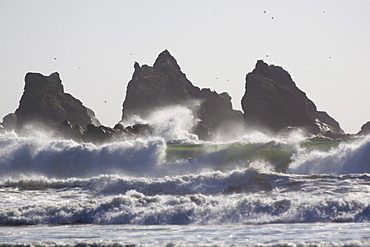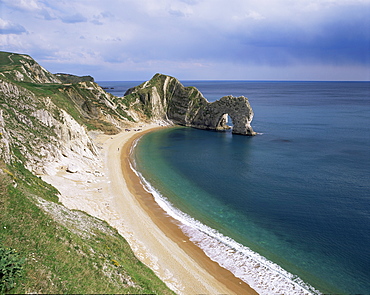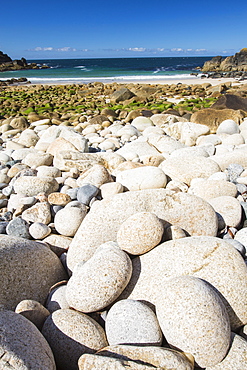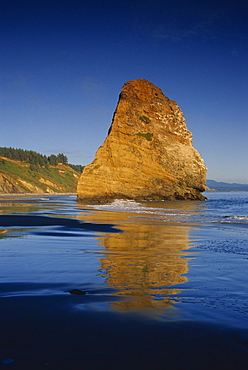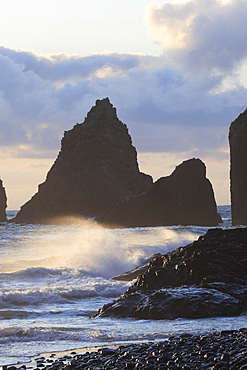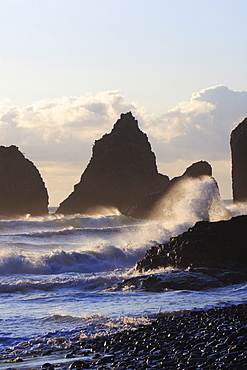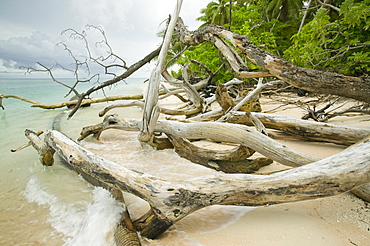Results
« Previous 1 2
140 results found
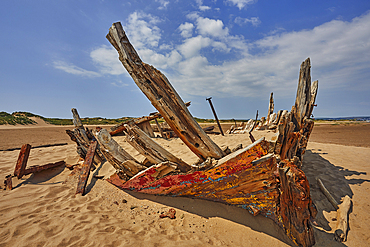
The remains of a wrecked boat on sand flats at Crow Point, in the Taw and Torridge estuary, near Barnstaple, north Devon, England, United Kingdom, Europe
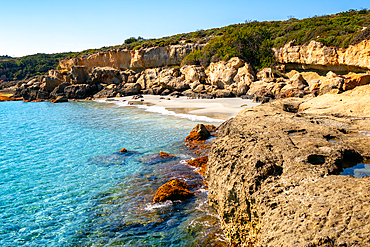
Petrified forest, Agia Marina, Agios Nikolaos Geopark, beach with turquoise water in the south of Greece, Greece
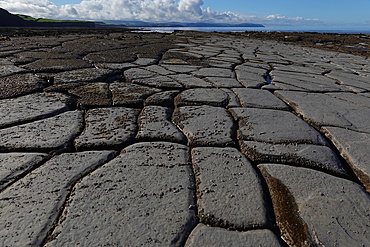
The intertidal zone of the Quantock Coast, West Somerset, contains an abundance of geology and wildlife. It is a Site of Special Scientific Interest (SSSI) and is of international geological importance.
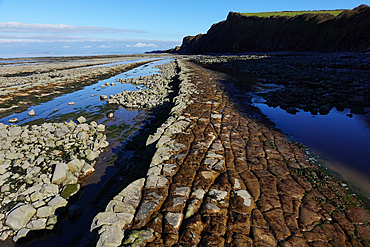
The intertidal zone of the Quantock Coast, West Somerset, contains an abundance of geology and wildlife. It is a Site of Special Scientific Interest (SSSI) and is of international geological importance.
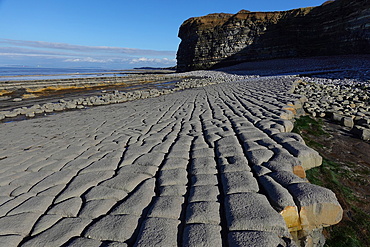
The intertidal zone of the Quantock Coast, West Somerset, contains an abundance of geology and wildlife. It is a Site of Special Scientific Interest (SSSI) and is of international geological importance.
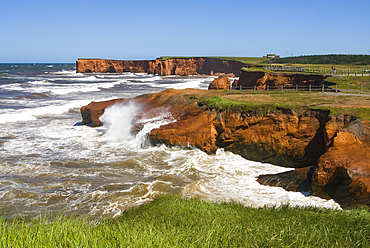
Sandstone cliffs of Belle-Anse, Cap aux Meules island, Magdalen Islands, Gulf of Saint Lawrence, Quebec province, Canada, North America
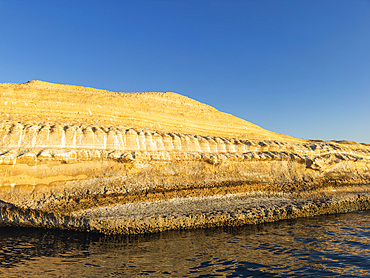
Sandstone cliff formations at sunrise on Isla San Jose, Baja California Sur, Sea of Cortez, Mexico, North America
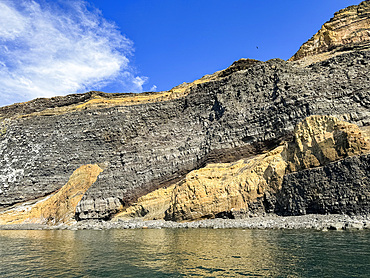
Layers of lava flows and tuff from the dormant volcano on Isla Tortuga, Baja California, Sea of Cortez, Mexico, North America
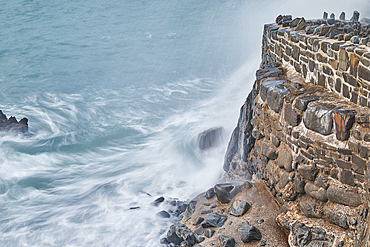
Evening shoreline, Atlantic surf crashing against the harbour wall at Hartland Quay, north Devon, England, United Kingdom, Europe

The intertidal zone of the Quantock Coast, West Somerset, contains an abundance of geology and wildlife. It is a Site of Special Scientific Interest (SSSI) and is of international geological importance.
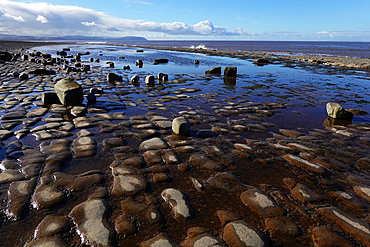
The intertidal zone of the Quantock Coast, West Somerset, contains an abundance of geology and wildlife. It is a Site of Special Scientific Interest (SSSI) and is of international geological importance.
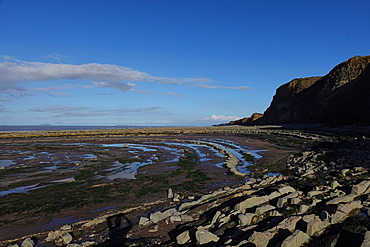
The intertidal zone of the Quantock Coast, West Somerset, contains an abundance of geology and wildlife. It is a Site of Special Scientific Interest (SSSI) and is of international geological importance.
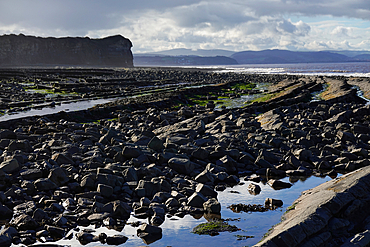
The intertidal zone of the Quantock Coast, West Somerset, contains an abundance of geology and wildlife. It is a Site of Special Scientific Interest (SSSI) and is of international geological importance.
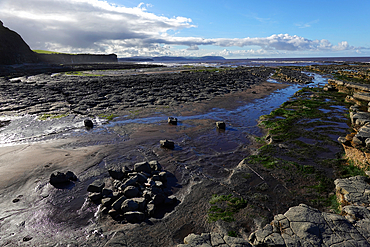
The intertidal zone of the Quantock Coast, West Somerset, contains an abundance of geology and wildlife. It is a Site of Special Scientific Interest (SSSI) and is of international geological importance.
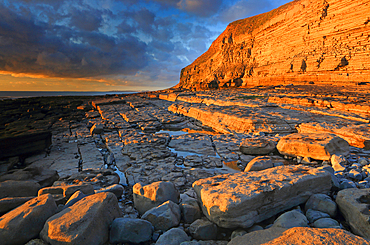
Golden evening light on the limestone cliffs, Dunraven Bay, Southerndown, Vale of Glamorgan, Wales, United Kingdom
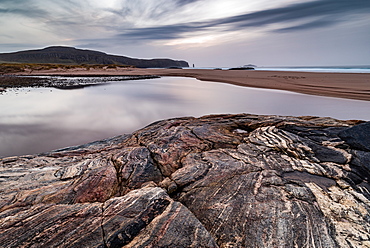
Sandwood Bay, with Am Buachaille sea stack in far distance, Sutherland, Scotland, United Kingdom, Europe

Looking towards Isle of Rum at twilight from rocks at Singing Sands (Camas Sgiotaig), Isle of Eigg, Inner Hebrides, Scotland, United Kingdom, Europe
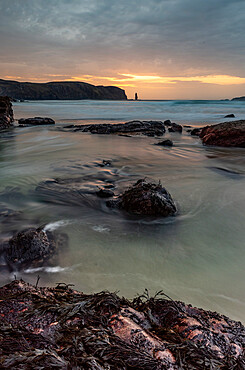
Rock formations at Sandwood Bay, with Am Buachaille sea stack in far distance, Sutherland, Scotland, United Kingdom, Europe
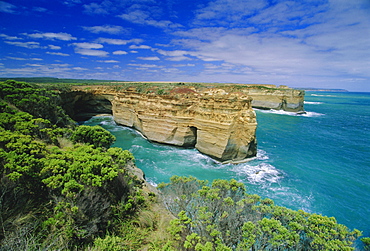
Loch Ard Gorge on the rapidly eroding coatline of Port Campbell National Park on the Great Ocean Road, site of the famous Loch Ard wreck of 1878, Victoria, Australia
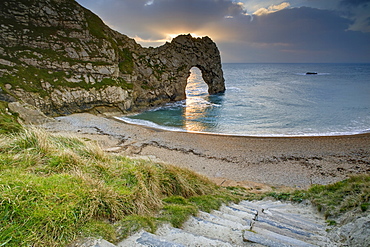
Winter Sunset at Durdle Door, Jurassic Coast, UNESCO World Heritage Site, Dorset, England, United Kingdom, Europe
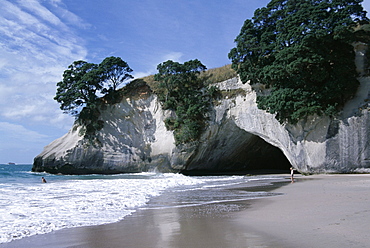
Beach, white chalk cliffs, stacks and arches, Whitianga, Coromandel Peninsula, South Auckland, North Island, New Zealand, Pacific
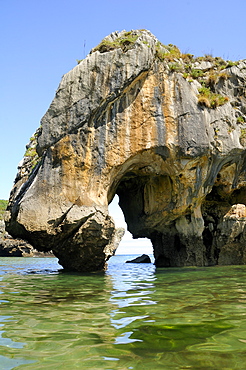
Natural rock archway carved by the sea through limestone rock at Cuevas del Mar (sea caves) beach, near Llanes, Asturias, Spain, Europe
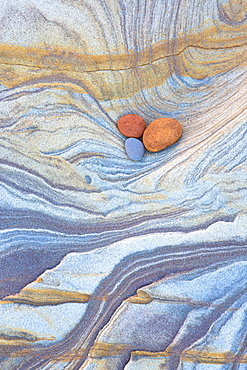
Colourful patterns created by sea erosion on rocks revealed at low tide on Spittal Beach, Berwick-upon-Tweed, Northumberland on border between England and Scotland, United Kingdom, Europe
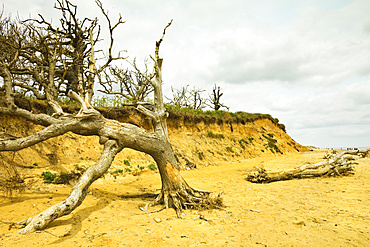
Severe erosion of loose Quaternary glacial sands on this coast that has retreated more than 500m since the1830s, Covehithe, Suffolk, England, United Kingdom, Europe
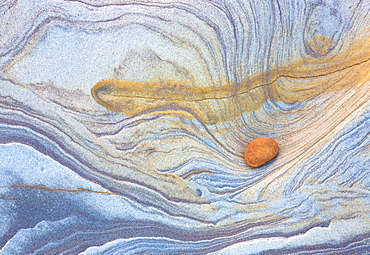
Colourful patterns created by sea erosion on rocks revealed at low tide on Spittal Beach, Berwick-upon-Tweed, Northumberland on border between England and Scotland, United Kingdom, Europe

Volcanic rocks and beach at Paleokori, southern coast, Milos, Cyclades islands, Greece, Mediterranean, Europe
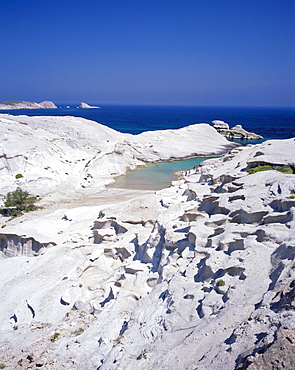
Aerial view of beach and rock formations, Sarakiniko, Milos, Cyclades Islands, Greek Islands, Greece, Europe

Severe erosion of loose Quaternary glacial sands on this coast that has retreated more than 500m since the1830s, Covehithe, Suffolk, England, United Kingdom, Europe
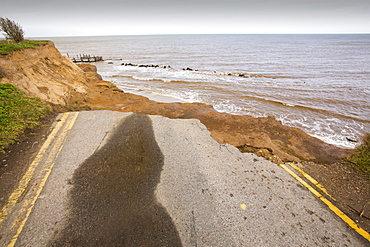
A road eroded and dropping off into the North sea at Happisburgh, Norfolk, a rapidly eroding section of coastline, UK.
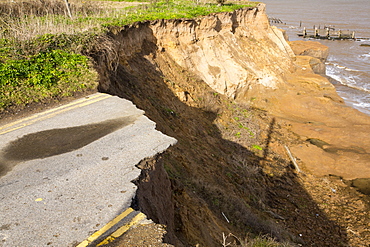
A road eroded and dropping off into the North sea at Happisburgh, Norfolk, a rapidly eroding section of coastline, UK.
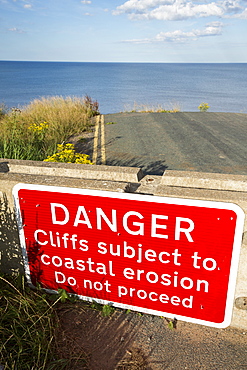
A collapsed coastal road near Skipsea on Yorkshires East Coast, UK. The coast is composed of soft boulder clays, very vulnerable to coastal erosion. This sectiion of coast has been eroding since Roman times, with many villages having disappeared into the sea, and is the fastest eroding coast in Europe. Climate change is speeding up the erosion, with sea level rise, increased stormy weather and increased heavy rainfall events, all playing their part.
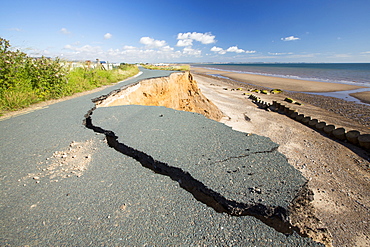
A collapsed coastal road at between Skipsea and Ulrome on Yorkshires East Coast, near Skipsea, UK. The coast is composed of soft boulder clays, very vulnerable to coastal erosion. This sectiion of coast has been eroding since Roman times, with many villages having disappeared into the sea, and is the fastest eroding coast in Europe. Climate change is speeding up the erosion, with sea level rise, increased stormy weather and increased heavy rainfall events, all palying their part.
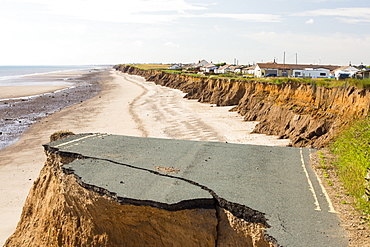
A collapsed coastal road at between Skipsea and Ulrome on Yorkshires East Coast, near Skipsea, UK. The coast is composed of soft boulder clays, very vulnerable to coastal erosion. This sectiion of coast has been eroding since Roman times, with many villages having disappeared into the sea, and is the fastest eroding coast in Europe. Climate change is speeding up the erosion, with sea level rise, increased stormy weather and increased heavy rainfall events, all palying their part.

A collapsed coastal road at Easingotn on Yorkshires East Coast, near Skipsea, UK. The coast is composed of soft boulder clays, very vulnerable to coastal erosion. This sectiion of coast has been eroding since Roman times, with many villages having disappeared into the sea, and is the fastest eroding coast in Europe. Climate change is speeding up the erosion, with sea level rise, increased stormy weather and increased heavy rainfall events, all palying their part.
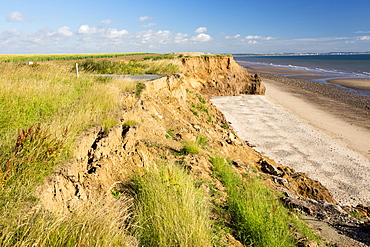
A collapsed coastal road at near Aldbrough on Yorkshires East Coast, near Skipsea, UK. The coast is composed of soft boulder clays, very vulnerable to coastal erosion. This sectiion of coast has been eroding since Roman times, with many villages having disappeared into the sea, and is the fastest eroding coast in Europe. Climate change is speeding up the erosion, with sea level rise, increased stormy weather and increased heavy rainfall events, all palying their part.
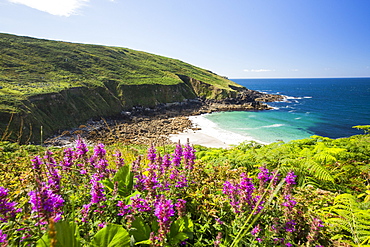
Cornish coastal scenery at Porthmeor Cove near Zennor, UK, with Purple loosestrife (Lythrum salicaria) flowering in the foreground.
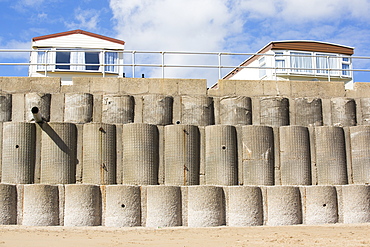
Concrete sea defences at Beach Bank Caravan Park in Ulrome near Skipsea on Yorkshires East Coast, UK. The coast is composed of soft boulder clays, very vulnerable to coastal erosion. This section of coast has been eroding since Roman times, with many villages having disappeared into the sea, and is the fastest eroding coast in Europe. Climate change is speeding up the erosion, with sea level rise, increased stormy weather and increased heavy rainfall events, all playing their part.

A collapsed coastal road at between Skipsea and Ulrome on Yorkshires East Coast, near Skipsea, UK. The coast is composed of soft boulder clays, very vulnerable to coastal erosion. This sectiion of coast has been eroding since Roman times, with many villages having disappeared into the sea, and is the fastest eroding coast in Europe. Climate change is speeding up the erosion, with sea level rise, increased stormy weather and increased heavy rainfall events, all palying their part.
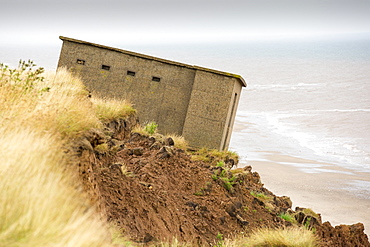
A Second world War lookout post leaning alarmingly and about to tumble over the edge of the cliff near Aldbrough on Yorkshires East Coast, UK. The coast is composed of soft boulder clays, very vulnerable to coastal erosion. This section of coast has been eroding since Roman times, with many villages having disappeared into the sea, and is the fastest eroding coast in Europe. Climate change is speeding up the erosion, with sea level rise, increased stormy weather and increased heavy rainfall events, all playing their part.
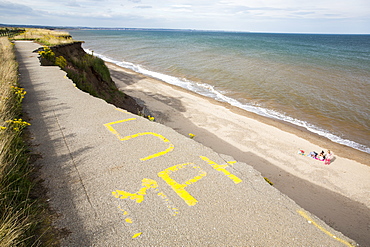
A collapsed coastal road at Barmston on Yorkshires East Coast, near Skipsea, UK. The coast is composed of soft boulder clays, very vulnerable to coastal erosion. This sectiion of coast has been eroding since Roman times, with many villages having disappeared into the sea, and is the fastest eroding coast in Europe. Climate change is speeding up the erosion, with sea level rise, increased stormy weather and increased heavy rainfall events, all palying their part.

A holiday chalet in the sand dunes at low Newton by the Sea on Northumberland's coast stands precarioulsy close to the edge following a severe storm surge in December 2013 that caused considerable erosion to the sand dunes.

Dunes collapsing at the head of the beach on the Northumberland coast after being undercut by a storm and high tide.

After a week of high tides, storm surges and storm force winds, the sea front promenade of Aberystwyth in Wales has been devastated, with millions of £'s of damage. The crsahing waves punched a large hole in the sea wall and has collapsed Aberystwyth's iconic, Victorian promenade shelter, which has stood for over 100 years. This picture was taken on Wednesday 8th January, 2014, the day the council started to try and clear the thousands of tonnes of beach rubble off the sea front road.
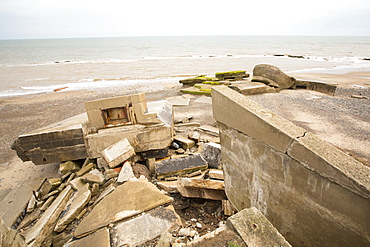
The Remains of the Godwin battery on the beach at Kilnsea at the head of Spurn point on Yorkshires East Coast, UK. Initially constructed during the First World War, the Godwin Battery was added to during the Second World War. It comprised of gun emplacements, search light, barracks, officers’ mess, and a hospital. This section of coastline is the fastest eroding coastline in Europe. The soft boulder clay cliffs are easily eroded and have been eroding since Roman Times, but recently the climate change impacts of increased stormy weather, increased heavy rainfall events and sea level rise have accelerated the rate of erosion. The average rate of attrition is 1.5metres per year, last year it was 5 metres.
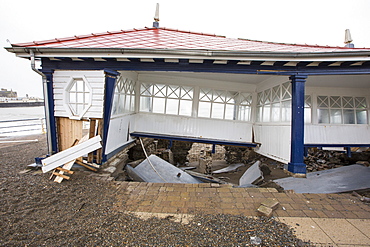
After a week of high tides, storm surges and storm force winds, the sea front promenade of Aberystwyth in Wales has been devastated, with millions of £'s of damage. The crsahing waves punched a large hole in the sea wall and has collapsed Aberystwyth's iconic, Victorian promenade shelter, which has stood for over 100 years. This picture was taken on Wednesday 8th January, 2014, the day the council started to try and clear the thousands of tonnes of beach rubble off the sea front road.

After a week of high tides, storm surges and storm force winds, the sea front promenade of Aberystwyth in Wales has been devastated, with millions of £'s of damage. The crsahing waves punched a large hole in the sea wall and has collapsed Aberystwyth's iconic, Victorian promenade shelter, which has stood for over 100 years. This picture was taken on Wednesday 8th January, 2014, the day the council started to try and clear the thousands of tonnes of beach rubble off the sea front road.
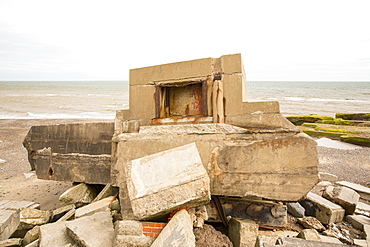
The Remains of the Godwin battery on the beach at Kilnsea at the head of Spurn point on Yorkshires East Coast, UK. Initially constructed during the First World War, the Godwin Battery was added to during the Second World War. It comprised of gun emplacements, search light, barracks, officers’ mess, and a hospital. This section of coastline is the fastest eroding coastline in Europe. The soft boulder clay cliffs are easily eroded and have been eroding since Roman Times, but recently the climate change impacts of increased stormy weather, increased heavy rainfall events and sea level rise have accelerated the rate of erosion. The average rate of attrition is 1.5metres per year, last year it was 5 metres.

Seychelles, La Digue Island, Source D'argent (Silverspring) Beach Characterized By Huge Basaltic Rocks And Turquoise Lagoon
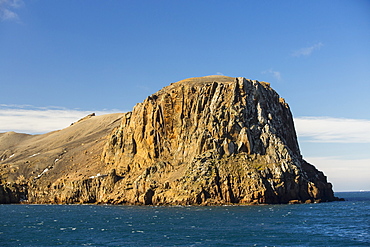
Volcanic rocks on Deception Island in the South Shetland Islands off the Antarctic Peninsular which is an active volcanic caldera.
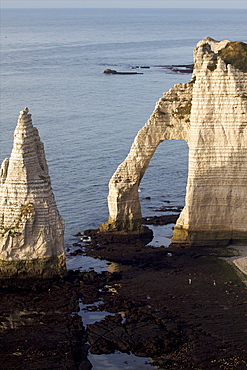
The pebble beach of the Aiguille of Etretat and the cliffs of the Cote d'Albatre, Seine Maritime, Normandy, France, Europe
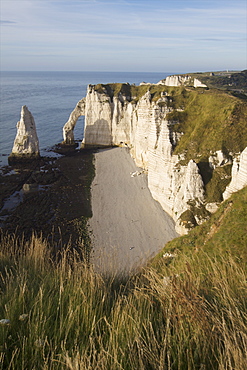
The pebble beach of the Aiguille of Etretat and the cliffs of the Cote d'Albatre, Seine Maritime, Normandy, France, Europe
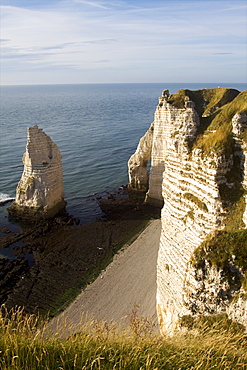
The pebble beach of the Aiguille of Etretat and the cliffs of the Cote d'Albatre, Seine Maritime, Normandy, France, Europe

The pebble beach of the Aiguille of Etretat and the cliffs of the Cote d'Albatre, Seine Maritime, Normandy, France, Europe

A pebble beach of Etretat and the cliffs of the Cote d'Albatre, Seine Maritime, Normandy, France, Europe

A pebble beach of Etretat and the cliffs of the Cote d'Albatre, Seine Maritime, Normandy, France, Europe
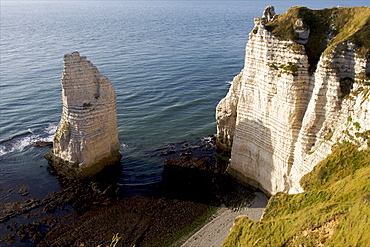
The pebble beach of Etretat and the cliffs of the Cote d'Albatre, Seine Maritime, Normandy, France, Europe

The pebble beach of the Aiguille of Etretat and the cliffs of the Cote d'Albatre, Seine Maritime, Normandy, France, Europe


